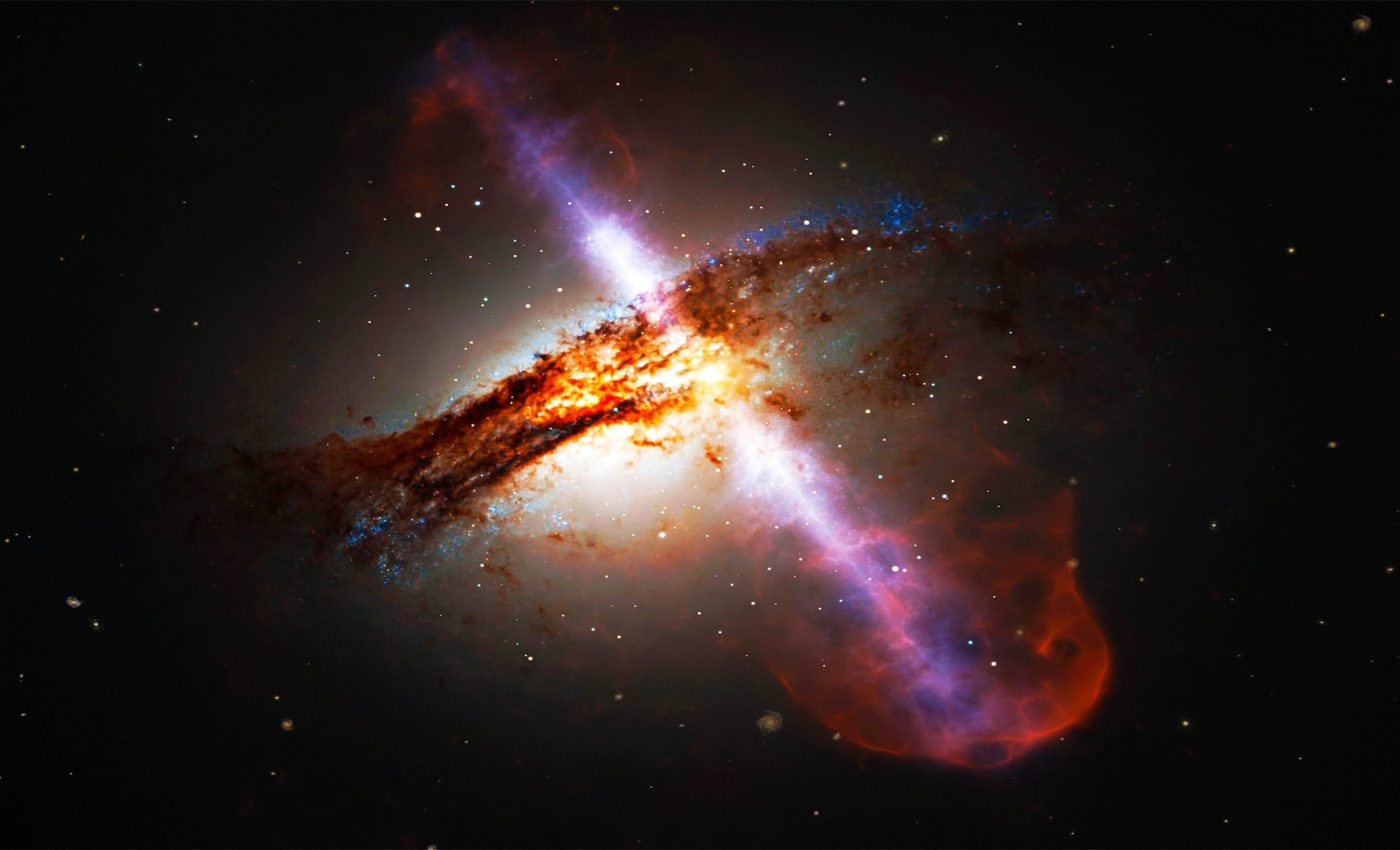
Galaxies have ‘hearts and lungs’ that help them live longer
Galaxies manage to avoid an early demise by effectively regulating their growth through mechanisms akin to a “heart and lungs,” a new study suggests.
If these mechanisms didn’t exist, the Universe would be filled with massive “zombie” galaxies, containing dead and dying stars.
The research, published in the Monthly Notices of the Royal Astronomical Society, tackles the mystery of why galaxies are not larger than expected.
Inhibited galaxy growth
“Galaxies evolve under the influence of gas flows between their interstellar medium and their surrounding gaseous haloes, known as the circum-galactic medium (CGM),” wrote the researchers.
“Though the CGM is substantially less dense than its associated galaxy’s interstellar medium, this vast reservoir harbors 3–5 times as many baryons and heavy elements.”
“However, estimated star-formation rates in many galaxies are lower than expected given the anticipated surrounding ambient cool-gas inflows.”
“Although the jets from active galactic nuclei (AGN) are not well understood, it may be possible for energy transfer from the gas jets of AGN to heat the ambient surrounding the host galaxy and moderate these inflows.”
Heart at the center of galaxies
The researchers propose that supermassive black holes at the centers of galaxies act like hearts, while the bipolar supersonic jets they emit function like lungs, regulating the galaxy’s “breathing” and energy distribution.
This regulation limits the amount of gas that galaxies absorb to convert into stars, preventing uncontrolled growth.
Focus of the research
“Jets from active nuclei may supply the heating which moderates cooling and accretion from the circum-galactic medium,” wrote the study authors.
“While steady overpressured jets can drive a circulatory flow, lateral energy transfer rarely exceeds 3 percent of jet power, after the initial bow shock has advanced.”
“Here, we explore if pulses in high-pressure jets are capable of sufficient lateral energy transfer into the surrounding environment. We answer this by performing a systematic survey of numerical simulations in an axisymmetric hydrodynamic mode.”
Unexpected behavior of galaxies
PhD student Carl Richards developed the theory through these innovative simulations, showing that pulses from the black hole cause jet shock fronts to oscillate, much like a diaphragm in a chest cavity. This action transmits energy throughout the galaxy, slowing gas accretion and growth.
“We realized that there would have to be some means for the jets to support the body – the galaxy’s surrounding ambient gas – and that is what we discovered in our computer simulations,” Richards said.
“The unexpected behavior was revealed when we analyzed the computer simulations of high pressure and allowed the heart to pulse.”
Shock waves from high-pressure jets
The high-pressure jets act like bellows, sending out sound waves that suppress the galaxy’s expansion. This is similar to the phenomenon seen with sound and shock waves produced by terrestrial activities, such as opening a bottle of champagne or rocket exhausts.
“This sent a stream of pulses into the high-pressure jets, causing them to change shape as a result of the bellows-like action of the oscillating jet shock fronts,” Richards explained.
Resistance to unchecked growth
Evidence supporting this theory comes from observations of ripples in extra-galactic media, such as those in the Perseus galaxy cluster, which are believed to be examples of sound waves.
These ripples sustain the ambient environment surrounding a galaxy, preventing excessive growth. Conventional cosmological simulations have struggled to account for the flows of gas into galaxies, leading to the mystery of their limited size.
The highly-active black hole at a galaxy’s heart provides necessary resistance to unchecked growth.
Striking the right balance of galaxy formation
“To do this is not easy, however, and we have constraints on the type of pulsation, the size of the black hole and the quality of the lungs,” said co-author Michael Smith, an astronomer at the University of Kent.
“Breathing too fast or too slow will not provide the life-giving tremors needed to maintain the galaxy medium and, at the same time, keep the heart supplied with fuel.”
In addition, galaxies’ lifespans are extended by their internal “heart and lungs,” where the supermassive black hole engine at its core helps inhibit growth by limiting the amount of gas collapsing into stars from an early stage.
This mechanism has allowed galaxies to exist in their current form, preventing them from burning out and becoming “zombie” galaxies.
Image Credit: Credit ESA/Hubble, L. Calçada (ESO) / C Richards/MD Smith/University of Kent
—–
Like what you read? Subscribe to our newsletter for engaging articles, exclusive content, and the latest updates.
Check us out on EarthSnap, a free app brought to you by Eric Ralls and Earth.com.
—–













